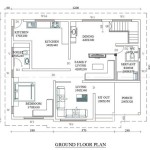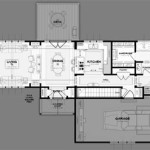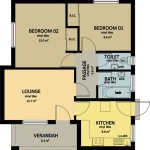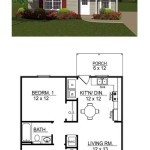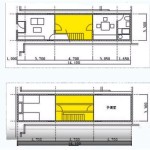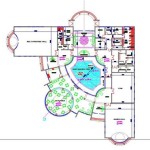Plans to Build a Hobbit House
The allure of a hobbit house, with its earth-sheltered warmth and whimsical charm, has captured the imagination of many. Building a hobbit house, while a significant undertaking, is achievable with careful planning and execution. This article explores the key elements involved in planning such a project.
One of the initial steps involves securing suitable land. The ideal location for a hobbit house incorporates a slope or hill, allowing for partial embedding into the earth. This natural insulation contributes significantly to energy efficiency. A south-facing slope is often preferred for maximizing sunlight exposure, especially in colder climates. Soil composition is another crucial factor. Well-draining soil is essential to prevent water accumulation and potential structural issues. A thorough soil analysis is recommended to determine suitability.
Once land is secured, the design phase commences. Hobbit house designs vary considerably, from simple, single-room dwellings to more complex, multi-room structures. Architectural plans should address the specific needs and preferences of the future occupants. Key considerations include the number of rooms, desired square footage, and the layout of the interior space. Incorporating sustainable design principles, such as passive solar heating and rainwater harvesting, can enhance both the environmental and economic benefits of the project.
Obtaining the necessary permits is a crucial legal requirement. Building codes and regulations vary by location, and it's essential to consult with local authorities to ensure compliance. Permit applications typically require detailed architectural plans, site surveys, and engineering reports. Engaging a qualified architect and engineer can streamline this process and ensure that the proposed structure adheres to all relevant regulations.
Material selection significantly impacts the final aesthetic and structural integrity of the hobbit house. Traditional hobbit houses utilize natural materials such as stone, timber, and earth. Reclaimed or sustainably sourced materials offer both environmental and aesthetic advantages. The structural framework can be constructed from timber or concrete, depending on the design and local building practices. The roof, often a prominent feature of a hobbit house, can be constructed from a variety of materials, including thatch, cedar shingles, or living roofs planted with vegetation.
Construction begins with excavation and site preparation. The extent of excavation depends on the size and design of the hobbit house. For partially embedded structures, the hillside is carefully excavated to create the desired shape and footprint. Proper drainage systems are installed to prevent water accumulation around the foundation. The foundation itself can be constructed from concrete, stone, or a combination of materials, providing a stable base for the structure.
Building the walls and roof follows the foundation work. Walls can be constructed using a variety of techniques, including traditional stone masonry, cob (a mixture of earth, clay, and straw), or structural insulated panels (SIPs). The chosen method will influence the insulation and thermal performance of the dwelling. The roof structure is then erected, and the chosen roofing material applied. Careful attention to detail is required to ensure a weathertight and durable roof.
Interior finishing is the final stage of construction. This includes installing insulation, electrical wiring, plumbing, and interior walls. Flooring options can range from natural stone or tile to reclaimed wood. Interior design elements should complement the overall aesthetic of the hobbit house, creating a comfortable and inviting living space. Incorporating natural light through strategically placed windows and skylights can enhance the ambiance and reduce the need for artificial lighting.
Landscaping plays a vital role in integrating the hobbit house into its surroundings. Planting native trees, shrubs, and flowers can help blend the structure seamlessly into the landscape. Creating pathways and patios using natural materials such as stone or gravel adds to the overall aesthetic appeal. The surrounding terrain can also be utilized to create gardens, outdoor seating areas, and other features that enhance the functionality and enjoyment of the outdoor space.
The ongoing maintenance of a hobbit house is essential for its longevity. Regular inspections should be conducted to identify any potential issues, such as water damage, structural settling, or pest infestations. Proper ventilation is crucial to prevent moisture buildup and maintain a healthy indoor environment. The exterior of the house may require periodic cleaning or repairs depending on the chosen materials and local climate conditions. Maintaining the landscaping around the house is also essential to prevent overgrowth and ensure proper drainage.
Building a hobbit house requires significant planning, resources, and commitment. However, the unique charm and sustainable potential of these dwellings make them an attractive option for those seeking an alternative living experience. Thorough research, meticulous planning, and adherence to building regulations are essential for successfully realizing the dream of a hobbit house.

Hobbit House Plan

Hobbit House Plans Storybook Sanctuaries

How To Build A Hobbit House Diy Projects Craft Ideas S For Home Decor With

How To Build A Hobbit House In Your Backyard Bored Panda

Hobbit House Plans Storybook Sanctuaries

14 Cutest Custom And Prefab Hobbit Houses For Tiny Living Fairy Tale Style Craft Mart

The Hobbit Floor Plan Of Bag End Natural Building Blog

Pin By Dan Adar On Garden Unique House Plans Cob

How To Build A Hobbit House Building Process And Equipping

Real Life Hobbit House Built In Scotland Designs Ideas On Dornob

